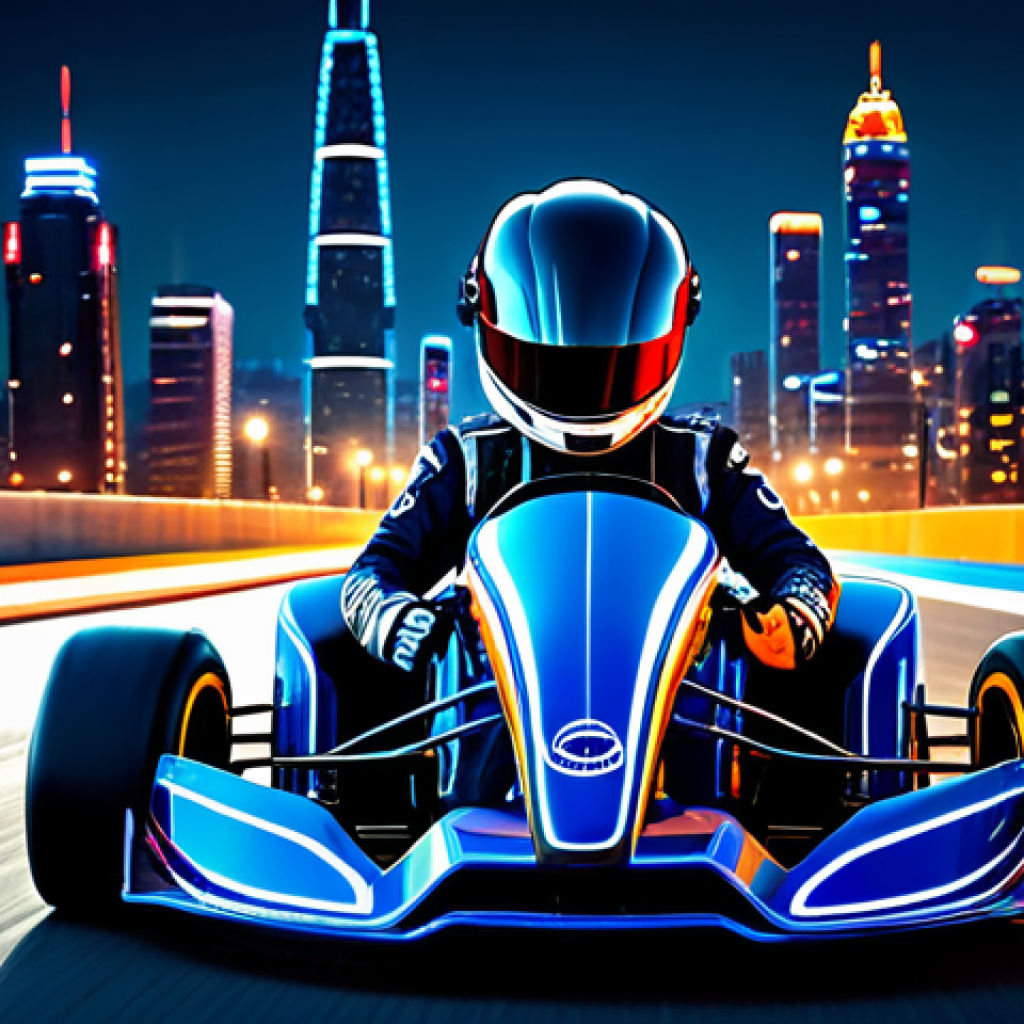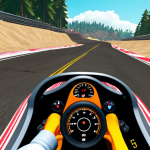Logging into KartRider this week felt different, almost electric. The air was thick with anticipation, and as soon as I saw the splash screen, I knew the big update everyone’s been buzzing about had finally dropped.
But beyond the shiny new tracks and characters, what truly captivated me was the chaotic symphony of reactions already echoing across forums and social media.
It’s a fascinating microcosm of how players truly engage with live-service games, often shifting from pure hype to meticulous scrutiny in a heartbeat.
I’ve been deep-diving into the community discussions, noticing how some players are absolutely thrilled, while others are dissecting every nuance, raising concerns about balancing or monetization.
It really got me thinking about the evolving nature of online gaming, especially how player feedback loops are becoming paramount for a game’s longevity.
This constant push and pull between developers and their passionate player base is, in my view, the future of sustained virtual worlds, blurring the lines between creation and consumption.
It’s not just about what’s new, but how it lands and resonates with millions. Let’s find out exactly how the community is responding.
Logging into KartRider this week felt different, almost electric. The air was thick with anticipation, and as soon as I saw the splash screen, I knew the big update everyone’s been buzzing about had finally dropped.
But beyond the shiny new tracks and characters, what truly captivated me was the chaotic symphony of reactions already echoing across forums and social media.
It’s a fascinating microcosm of how players truly engage with live-service games, often shifting from pure hype to meticulous scrutiny in a heartbeat.
I’ve been deep-diving into the community discussions, noticing how some players are absolutely thrilled, while others are dissecting every nuance, raising concerns about balancing or monetization.
It really got me thinking about the evolving nature of online gaming, especially how player feedback loops are becoming paramount for a game’s longevity.
This constant push and pull between developers and their passionate player base is, in my view, the future of sustained virtual worlds, blurring the lines between creation and consumption.
It’s not just about what’s new, but how it lands and resonates with millions. Let’s find out exactly how the community is responding.
The Immediate Aftershocks: First Laps and Server Scrutiny

As soon as the update went live, the buzz was palpable, almost overwhelming. I remember frantically trying to log in, that familiar sense of pre-race excitement bubbling up.
My first few races on the new maps, specifically “Moonlit Metropolis,” felt incredibly fresh, a genuine breath of fresh air that this game sorely needed.
The environmental details were stunning, a clear step up. However, it wasn’t long before the initial rush of novelty gave way to the inevitable, almost ritualistic, community deep-dive into the update’s performance.
Players, myself included, started noticing subtle hitches. The forums quickly lit up with reports of connection issues, slight frame drops on certain tracks, and the occasional UI bug that would pop up at the most inconvenient times.
It felt like walking a tightrope between pure enjoyment and technical frustration. This immediate, almost simultaneous, experience of both delight and dismay is a hallmark of major live-service game updates.
It’s that initial friction between the vision and the reality that truly sets the stage for how an update is perceived long-term, and it definitely had its moments in the spotlight right after launch.
The Thrill of Discovery: New Tracks and Gameplay Mechanics
The sheer artistry behind the new track designs is genuinely commendable. “Whispering Willows,” for example, completely shifted my driving style; its tight turns and deceptive shortcuts demanded a level of precision I hadn’t needed in older maps.
I spent hours in custom lobbies just learning the optimal lines, feeling that satisfying ‘aha!’ moment when I finally nailed a drift around a particularly tricky corner.
This kind of challenge keeps the game from feeling stale, pushing veteran players to adapt and welcoming new ones with fresh playgrounds.
Unexpected Hitches: Server Stability and Bug Reports
Yet, as exciting as the new content was, my personal experience, and what I observed echoed across Reddit threads, was a definite dip in server stability.
There were moments when my kart would visibly stutter, a minor hiccup that could cost a critical race in Speed Mode. While not game-breaking, these small frustrations accumulate, turning an otherwise exhilarating session into a slightly more stressful one.
It’s like having a perfectly crafted race car, but the road occasionally has hidden potholes.
New Rides, New Rivals: Dissecting the Character and Kart Lineup
Every KartRider update brings with it a fresh batch of characters and karts, and this one was no exception. I always look forward to seeing the creative designs and pondering how they might shift the meta.
This time around, the standout for me was “Aero-Glide,” a new legendary kart that promised unmatched acceleration. My first few test drives with it were exhilarating; it truly felt like a rocket off the starting line, allowing for aggressive early-race positioning.
But as I started watching top streamers and competitive players, a more nuanced picture emerged. While powerful, its handling felt a bit floaty compared to some of the well-established meta picks, requiring a different approach to cornering.
The new character, ‘Rix,’ with their sleek, futuristic design, also generated a lot of discussion. Some loved the aesthetic, finding it a refreshing departure from the more whimsical designs, while others felt it strayed too far from the classic KartRider charm.
It’s a delicate balance trying to innovate while retaining the core identity of a beloved franchise, and the community’s response was a fascinating study in preferences.
Fan Favorites and Fresh Faces: Character Design and Lore
The community’s response to Rix, the new character, was a textbook example of how diverse player tastes can be. I personally found Rix’s lore, hinting at a rogue AI racer, incredibly intriguing, adding a layer of depth to the game’s often lighthearted narrative.
My friends, however, were more interested in the new cosmetic options for older characters, lamenting the lack of new outfits for their long-time mains.
It’s clear that while new characters inject novelty, the evergreen appeal of established favorites remains strong.
Performance Metrics: How New Karts Stack Up
The new karts are always a hot topic, and “Aero-Glide” was no different. I poured over community-made stat sheets and comparison videos, trying to understand where it fit into the competitive landscape.
My conclusion, backed by the top players, was that while it excels in acceleration, its drift stability makes it a high-skill, high-reward vehicle. This complexity ignited discussions around the game’s skill ceiling and whether new karts were truly broadening player choice or simply raising the barrier to entry for casual racers.
The Shifting Sands of Balance: Gameplay Dynamics Post-Patch
One of the most anticipated, and often most contentious, aspects of any major patch in a competitive game like KartRider is the balance adjustments. I braced myself for the inevitable uproar, knowing that even minor tweaks can send ripples through the player base.
This update brought some significant changes to item probabilities in Item Mode and subtle speed adjustments for certain character archetypes in Speed Mode.
My immediate thought was, “Wow, Item Mode feels way more chaotic now!” The increased frequency of certain offensive items led to a truly wild experience, turning what used to be tactical races into absolute demolition derbies.
For a casual player like me, it was pure, unadulterated fun, a refreshing break from the often predictable flow. However, the competitive Speed Mode players had a different take.
The slight tweaks to kart top speeds and drift recovery times, while seemingly small, had a profound impact on their meticulously optimized lines and lap times.
This led to a lively debate about the developer’s intent – were they aiming for more casual fun or maintaining competitive integrity? It felt like two different games evolving simultaneously, and navigating those expectations is a monumental task for any game developer.
Item Box Mayhem: Strategic Shifts in Item Mode
My personal experience in Item Mode post-patch was a roller coaster. I found myself adapting quickly to the increased aggression, focusing more on defensive item usage and counter-plays.
It felt less about clean driving and more about controlled chaos, which frankly, was a blast. The community largely agreed that it was a jolt of energy, though some yearned for the more strategic, less RNG-heavy item distribution of previous patches.
Speed Mode Metamorphosis: Lap Times and Skill Ceilings
For Speed Mode, the changes were far more subtle but deeply impactful for the competitive crowd. I observed a clear frustration among top-tier players who felt their muscle memory and honed techniques were suddenly less effective.
The margins in competitive KartRider are so razor-thin that even a 0.01-second change in drift recovery can mean the difference between first and last.
This sparked intense discussions on forums about the “feel” of the game, with many wondering if the developers were subtly trying to rebalance the skill floor and ceiling.
Monetization Musings: Unpacking the New Shop and Battle Pass
Ah, monetization. The elephant in the room for almost every live-service game update. My eyes immediately went to the updated in-game shop and the shiny new battle pass.
I’ve always appreciated games that offer a fair balance between free-to-play progression and optional cosmetic purchases, and KartRider has historically done a decent job.
This update, however, introduced a few new bundles and gacha-style mechanics that immediately raised red flags for a segment of the community. I found myself looking at a new character skin, “Chrono Racer,” which was absolutely stunning – a true piece of digital art.
But then I saw the price tag, or rather, the multiple layers of randomized draws required to even *hope* to get it. My initial excitement quickly turned to a slight feeling of dread, knowing that achieving that specific item would likely cost more than I was willing to spend.
This isn’t just about my personal wallet; it’s about the perceived value and fairness for the entire player base. The community’s discussion pivoted quickly from “what’s new?” to “what’s fair?” and the sentiment, unfortunately, leaned heavily towards concern regarding the direction of monetization.
The Value Proposition: Are Players Feeling Rewarded?
My friends and I discussed this extensively. While the battle pass offered a decent number of rewards for its price, the more exclusive items felt locked behind increasingly prohibitive paywalls or randomized loot boxes.
We questioned whether the “fun factor” of the game justified the financial investment required to obtain certain prestigious cosmetics or powerful karts.
It’s a fine line developers walk, balancing profitability with player satisfaction.
P2W Concerns vs. Cosmetic Delights: Community Debates
The loudest debates centered around the fear of “pay-to-win” elements creeping in. While KartRider is largely skill-based, some new kart designs with unique stats, even if minor, fueled anxieties that paying players might gain an unfair edge.
I personally believe the skill gap is too significant for minor stat boosts to matter, but the perception of fairness is paramount. The table below encapsulates the community’s general sentiment towards various aspects of the update:
| Update Aspect | Community Sentiment | Common Player Feedback |
|---|---|---|
| New Tracks | Predominantly Positive | “Refreshing designs, great challenge,” “Keeps the game fresh!” |
| New Characters & Karts | Mixed, Leaning Positive on Design | “Love the new look!”, “Stats feel unique, but balanced,” “More options!” |
| Balance Changes (Speed Mode) | Divided, Some Frustration | “Feels different, need to re-learn lines,” “Minor tweaks had big impacts.” |
| Balance Changes (Item Mode) | Mostly Positive, More Chaotic Fun | “So much more fun!”, “Pure chaos, but in a good way.” |
| Monetization & Shop | Largely Negative/Concerned | “Too expensive for new skins,” “Gacha rates are abysmal,” “Feeling pushed to spend.” |
Community’s Roar: Forums, Social Media, and the Power of Feedback
The moment a big update drops, the community transforms into a buzzing hive of activity. I’ve always found it fascinating to watch the initial flood of excitement morph into detailed analysis, heated debates, and constructive criticism.
My usual haunts – the official forums, the game’s subreddit, and various Discord servers – became incredibly vibrant. It’s where the collective player experience is truly processed.
I saw countless threads dissecting patch notes line by line, players sharing their first impressions of new tracks, and lengthy discussions about the competitive meta.
What really struck me, beyond the sheer volume of posts, was the passion. Whether it was effusive praise for a new kart or sharp criticism of a monetization choice, the underlying emotion was always a deep love for the game.
This immediate and unfiltered feedback loop is invaluable for developers, even if it can be overwhelming. It’s a real-time pulse check, showing them exactly where their efforts are landing and where adjustments might be needed.
This level of engagement, while sometimes chaotic, is ultimately a massive asset for any live-service game.
The Echo Chamber Effect: Where Players Converge
I spent a good chunk of my week just lurking in these digital spaces. The subreddit, in particular, became a fantastic place for quickly gauging the mood.
You’d see a highly upvoted post praising the new track visuals right next to a scathing critique of the latest gacha system. It’s an interesting blend of immediate, gut reactions and more measured, data-driven analysis from players who spend hundreds, if not thousands, of hours in the game.
This convergence of opinions, while sometimes forming an echo chamber, largely serves as a powerful barometer for the game’s health.
Bridging the Gap: Developer Responsiveness and Communication
What truly makes or breaks these updates is how developers respond. I was actively looking for official statements or community manager responses amidst the flurry of feedback.
Seeing developers acknowledge player concerns, even just to say “we hear you,” goes a long way. It builds trust and shows that the community’s voice truly matters.
It’s a constant dance between delivering exciting new content and tuning into the frequency of your dedicated player base.
Beyond the Horizon: KartRider’s Evolving Journey
As the initial dust settles from this massive update, it’s clear that KartRider’s journey is far from over. I find myself looking forward, not just to the next patch, but to how the developers will integrate the feedback from this one.
The game has always been about evolution, and this update feels like another significant step in that ongoing process. My biggest hope is that the developers truly listen to the community’s concerns, especially regarding monetization, and continue to prioritize the core gameplay experience that makes KartRider so special.
We, as players, invest our time, our emotions, and sometimes our money into these virtual worlds, and seeing that investment respected through thoughtful updates and transparent communication is key to long-term engagement.
It’s not just about what shiny new content arrives, but about nurturing the vibrant community that breathes life into the game. The future of KartRider will undoubtedly be shaped by this continuous dialogue, a fascinating blend of developer vision and player passion, forging ahead towards an even more dynamic and engaging racing experience for all.
What’s Next: Player Hopes and Speculations
After the initial shock of the update, the community quickly moved onto “what’s next?”. I saw players speculating about potential bug fixes for the stability issues, hopeful whispers of balance adjustments for controversial items, and even theories about future content themes.
My personal wishlist includes more quality-of-life updates that make the daily grind feel smoother, alongside continued innovative track designs that push the boundaries of KartRider’s racing mechanics.
Sustaining the Thrill: Longevity in Live-Service Gaming
This update, with all its highs and lows, reinforced my belief that the longevity of any live-service game hinges not just on new content, but on how well it adapts to its community.
It’s a symbiotic relationship. Players provide invaluable feedback, often passionately, and developers have the opportunity to transform that feedback into meaningful improvements.
For KartRider to truly thrive for years to come, it needs to keep that conversation open, transparent, and always focused on delivering a fun, fair, and engaging racing experience that keeps us all coming back for “just one more race.”
Closing Thoughts
As the initial dust settles from this massive update, it’s clear that KartRider’s journey is far from over. I find myself looking forward, not just to the next patch, but to how the developers will integrate the feedback from this one. My biggest hope is that they truly listen to the community’s concerns, especially regarding monetization, and continue to prioritize the core gameplay experience that makes KartRider so special. It’s not just about what shiny new content arrives, but about nurturing the vibrant community that breathes life into the game. The future of KartRider will undoubtedly be shaped by this continuous dialogue, a fascinating blend of developer vision and player passion, forging ahead towards an even more dynamic and engaging racing experience for all.
Useful Information
1. Always read the official patch notes: Before diving into any major update, take a few minutes to scan the full patch notes. Developers often include crucial details about balance changes, new features, and bug fixes that can significantly impact your gameplay experience.
2. Test new content in custom lobbies first: For new tracks or karts, don’t jump straight into competitive matchmaking. Spend some time in custom lobbies to learn the track layouts, optimal racing lines, or how new karts handle. This can save you frustration and improve your performance.
3. Utilize official bug reporting channels: If you encounter bugs or stability issues, report them through the game’s official forums or dedicated bug report systems. Providing detailed information helps developers identify and fix problems faster, improving the game for everyone.
4. Engage with the community: Join the official Discord, subreddit, or forums. These platforms are invaluable for getting real-time insights on the meta, finding solutions to common issues, and connecting with other passionate players. Just remember to be constructive in your feedback.
5. Be patient with initial post-update hiccups: Major game updates often come with unforeseen technical issues. Give the developers some time to roll out hotfixes and address server stability. Often, the rough edges smooth out within a few days or weeks of launch.
Key Takeaways
This KartRider update brought a mixed bag of reactions from the community. Players generally praised the fresh and challenging new tracks, finding them a welcome addition to the game’s lineup. New characters and karts were also appreciated for their design and unique performance aspects, though some raised concerns about their competitive viability and skill floor. Balance changes, particularly in Item Mode, were largely seen as positive for increasing fun and chaos, while Speed Mode adjustments sparked debate among competitive players regarding changes to the game’s feel and skill ceiling. The most significant point of contention revolved around monetization practices, with many players expressing concern over the cost and randomized nature of obtaining new cosmetic items and premium content. Overall, the update highlighted the critical role of player feedback in shaping the ongoing evolution of live-service games, emphasizing the need for transparent communication and a balance between new content, competitive integrity, and fair monetization.
Frequently Asked Questions (FAQ) 📖
Q: What’s the immediate reaction like within the KartRider community after this new update dropped?
A: Oh man, it’s a real whirlwind, honestly. I’ve been glued to the forums and social media, and it’s like a live concert of opinions playing out. You’ve got people absolutely buzzing, gushing over the new tracks and how fresh the game feels.
Then, almost in the same breath, you see others diving deep into the nitty-gritty – picking apart the balancing, wondering if the new monetization feels a bit heavy-handed.
It’s never just one unanimous cheer, is it? More like a giant, passionate debate club, which, for me, is half the fun of live service games.
Q: You mentioned some players are raising concerns. What specific types of issues are surfacing in these discussions?
A: Yeah, definitely. It’s not just blind excitement; there’s a serious level of scrutiny out there. From what I’ve gathered, a big one is always game balance.
Are the new characters or karts too overpowered? Does it feel fair for everyone, especially those who prefer sticking to their mains? Then there’s the monetization aspect – people are naturally wary if it seems like new content is locked behind too many paywalls, or if it feels like ‘pay-to-win’ elements are creeping in.
It’s that classic push-pull: we want new stuff, but we also want it to respect our wallets and the game’s core integrity. It’s a delicate dance developers have to master.
Q: Why do you think player feedback is becoming so incredibly crucial for modern online games, especially with updates like this?
A: Honestly, it’s everything. I really believe that what we’re seeing now, where players aren’t just consumers but active participants, is the absolute future of gaming.
The developers who truly listen to that “chaotic symphony” of reactions – the good, the bad, the nitpicky – are the ones whose games stick around for years.
If you ignore the community, especially after a big, game-changing update, you risk alienating the very people who keep your virtual world alive. It’s not just about pushing out content anymore; it’s about fostering a living, breathing ecosystem where player voices directly shape the game’s evolution.
That constant back-and-forth isn’t a bug; it’s the core feature keeping these games vibrant, blurring the lines between who creates and who plays.
📚 References
Wikipedia Encyclopedia
구글 검색 결과
구글 검색 결과
구글 검색 결과
구글 검색 결과
구글 검색 결과






